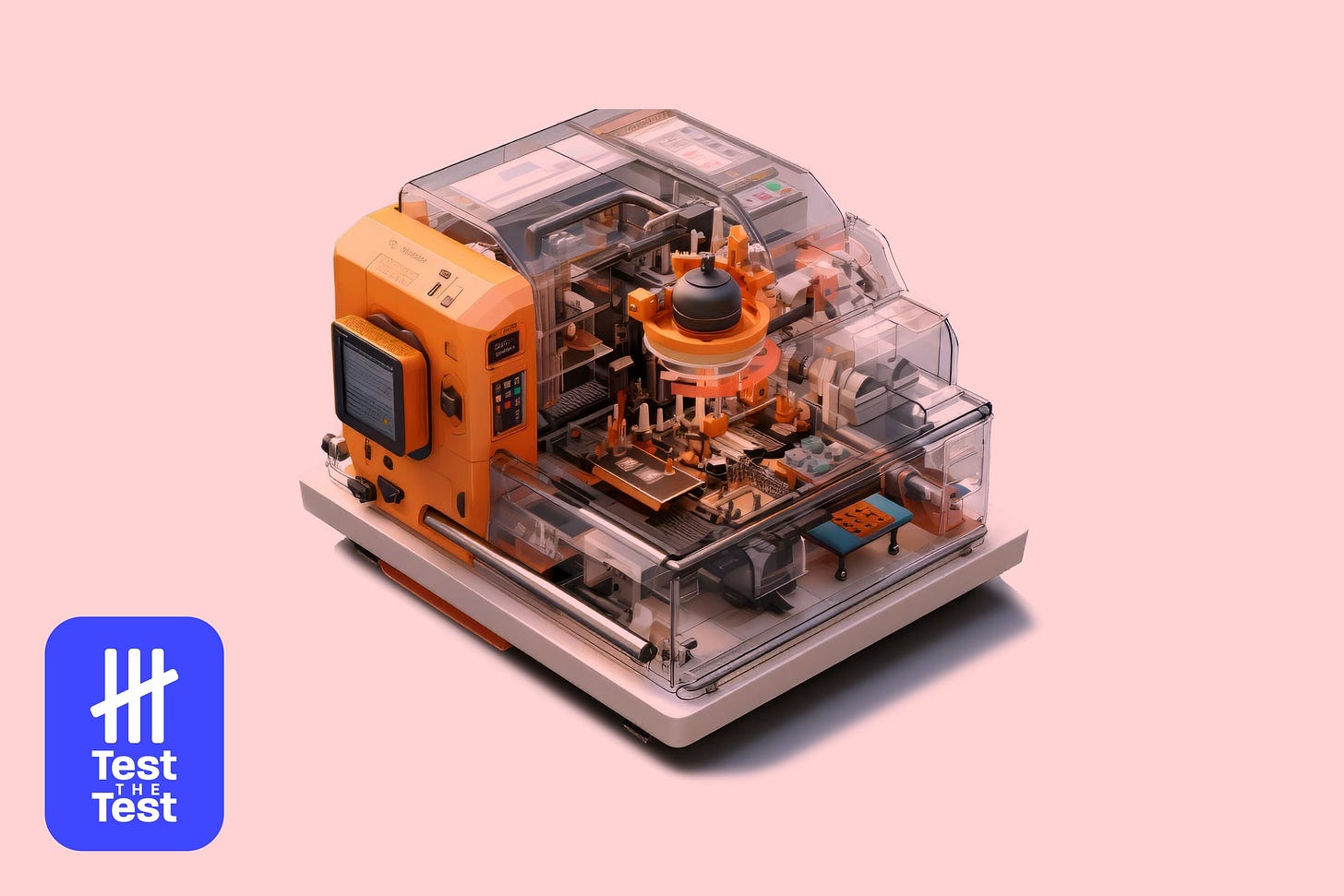Leave Software Testing to Robots
How AI automates quality assurance and changes the way we test software
Blink and you’ll miss it: software testing is being reinvented in front of our eyes. At first glance it may feel like it’s all incremental tweaks, small innovations, articles and tutorials, but make no mistake — this is a major shift that will leave no stone unturned.
What started as purely manual work in the 1970s has evolved through automation in the following decades, and now entered a new phase: autonomous testing. It’s fundamentally changing how teams approach quality assurance.
Manual testing meant checking every feature and function by hand. Automation improved on that by letting us write scripts that computers could run repeatedly. Now, autonomous testing goes a step further—using AI to decide what to test and how to test it, with minimal human involvement.
I like to use the analogy of tending a garden. Manual testing was like planting each seed and watering it by hand—labor-intensive, but precise. Automated testing was like setting up an irrigation system: much faster, but still needing someone to install and manage it. Autonomous testing is like a smart garden—one that waters and fertilizes on its own, monitors weather conditions, adjusts care based on plant needs, and optimizes growth, all without human input.
Testing from the future
Autonomous testing tools stand out for three key capabilities that are reshaping how testing gets done.
First, they use AI to generate test cases automatically, covering more ground than a human tester could reasonably think of. This kind of intelligent test generation increases both speed and breadth.
Second, these systems can create self-healing tests that adapt to changes in code or interfaces. When developers change something in the app, the tests automatically adjust and keep running. This cuts down the maintenance burden that often comes with traditional test automation.
And third, autonomous testing enables predictive analysis—using past test results and code history to identify where problems are likely to occur, even before anything breaks. This shifts the process from reactive bug fixing to proactive quality assurance. Microsoft’s recent release of the Playwright MCP server is a good example—it gives testing agents more contextual understanding and will likely accelerate the rise of “agentic AI” in testing.
This new era promises better test coverage, faster feedback cycles, fewer human errors, and lower maintenance costs. Performance testing also improves, with the ability to simulate thousands of users at once. And maybe most interestingly, these systems learn and improve with every test run—the opposite of what developers experience with traditional test suites, which tend to fall out of sync with the application over time.
Tools of the trade
This field is moving so quickly that it’s probably best if I avoid naming specific tools—many won’t last long anyway, and I’d like this article to stay relevant a bit longer.
Still, it’s a good moment for decision-makers to be smart about avoiding vendor lock-in and picking tools that allow easy migration. Even open source isn’t a sure bet. Right now, most people use Playwright (increasingly with auto-playwright or Microsoft’s Playwright MCP server), but not long ago, automated web testing was mostly dominated by Cypress or Selenium.
In times of rapid change, it’s worth remembering Peter Drucker’s insight:
“The greatest danger in times of turbulence is not the turbulence – it is to act with yesterday’s logic.”
So let’s keep an open mind about how we work with these new tools, what they can do, and where they might fall short. We’re starting to see more focused tools emerge—ones that specialize in things like visual validation or API security testing—instead of trying to solve every problem under one roof.
When choosing a tool, weigh all the costs: not just the sticker price, but the time it takes to learn, integrate, and maintain all the custom code and knowledge. And always remember: the goal isn’t testing. The goal is quality software.
Looping humans back in
Despite the impressive capabilities of autonomous testing, the most interesting conversations happening now aren’t about replacing humans—they’re about finding the right partnership between AI systems and testing professionals.
The testing community has always included skeptics, and for good reason. We’ve been promised testing silver bullets before. The truth is that understanding what makes software valuable to humans still requires human judgment. Testing isn’t just about finding bugs—it’s about understanding whether the software delivers value in ways that matter to people.
What’s emerging is a model where AI handles the repetitive, pattern-based work while humans focus on exploratory testing, user experience evaluation, and ethical considerations. Humans are uniquely equipped to ask questions like “Should this feature exist at all?” or “How might this be misused?” These are questions that existing AI frameworks won’t raise on their own, regardless of how sophisticated its test coverage becomes.
The tools themselves reflect this hybrid approach. They don’t try to eliminate human involvement completely—they try to amplify human judgment by taking over the cognitive drudgery. A tester freed from writing and maintaining basic regression tests can instead think about edge cases, unintended consequences, and creative ways users might interact with the system.
As testing evolves, the most successful teams will likely be those who understand both the power and limitations of AI testing tools. They’ll know when to trust the autonomous system and when human creativity, intuition, and ethical reasoning need to take the lead. The future isn’t robots replacing testers—it’s testers whose capabilities are extended by robots, working together toward something neither could achieve alone.



